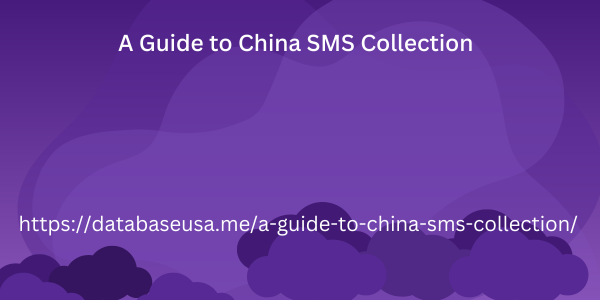This guide delves into the art of the follow-up email, equipping you with the tools and strategies to craft messages that get noticed and achieve your goals.
H2: Why Follow Up
Before diving into the how, let’s explore Insurance Telemarketing Leads the why. Follow-up emails serve several crucial purposes:
- Reiterate your message: People are busy, and emails can slip their mind. A gentle reminder can jog their memory and ensure your message is received.
- Demonstrate your professionalism: Following up shows initiative and dedication. It conveys that you value their time and the matter at hand.
- Move the conversation forward: A well-timed follow-up email can nudge the recipient to take action, whether it’s replying to your email, scheduling a meeting, or making a decision.
- Maintain positive relationships: Following up shows you care about building a rapport. It keeps the conversation going and fosters trust.
H2: When to Follow Up
Timing is everything in the world of follow-up emails. Here are some general guidelines:
- Initial Contact: For an initial email requesting information, a follow-up after 2-3 business days is appropriate.
- Meeting Requests: If you haven’t heard back about a meeting request within 24 hours, a polite follow-up is acceptable.
- Important Proposals: For critical proposals or deadlines, a follow-up after 1 business day might be necessary.
Remember: These are just general guidelines. Consider the context and urgency of your message when determining the appropriate follow-up window.
H2: Crafting Your Follow-Up Email
Now that you understand the importance of follow-up emails and the best timing, let’s explore the essential elements of crafting an effective message.
H3: Subject Line
The subject line is your first impression. It should be clear, concise, and pique the recipient’s interest enough to open the email.
- Avoid generic lines: Ditch subject lines like “Following Up” or “Re: Your Inquiry.”
- Be specific: Briefly mention the initial email’s topic or reference a specific action you’d like the recipient to take.
- Keep it short and sweet: Aim for under 50 characters to avoid truncation in inboxes.
Examples:
- Following up on [Meeting topic]
- Quick question about [Proposal name]
- Next steps for [Project name]?
Maintain a professional tone with a proper salutation
If corresponding with transfer number to new phone someone you know well, a friendly greeting like “Hi [Name]” is appropriate. Otherwise, opt for .
H3: Body of the Email
The body of your follow-up email should be clear, concise, and courteous.
- Start with a gentle reminder: Briefly reference your previous email and its date.
- State your purpose: Clearly explain why you’re following up. Do you need a response, confirmation, or next steps?
-
Keep it short and sweet: Aim for 2-3 sentences to avoid overwhelming the recipient
- Offer additional value (optional): If relevant, you can offer additional information or resources that might be helpful.
- Close with a call to action (CTA): Tell the recipient what you’d like them to do next.
- Maintain a professional tone: Use respectful language and avoid exclamation points or excessive informality.
I’m following up on our email from [date] regarding [meeting topic]. I’m eager to discuss this further and explore how we can move forward.
Are you available for a brief call next week to discuss next steps? Please let me know your availability.
Include your professional signature block with your name, title, company (if applicable), and contact information.






